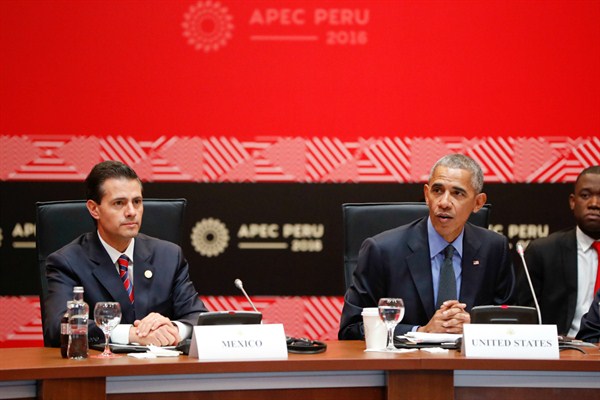MEXICO CITY — On the morning after the U.S. election, the front pages of Mexican dailies responded to Donald Trump’s win with shock. Given that Mexico found itself in Trump’s crosshairs throughout the race, Mexicans’ fears aren’t unfounded. But the U.S. president-elect might not be able to make good on every threat he made on the campaign trail.
Consider the nearly 2,000-mile U.S.-Mexico border. Trump will face plenty of challenges to building the infamous wall that was a centerpiece of his candidacy. First off, physical obstacles abound, including the Algodones Sand Dunes in southern California; the Coronado National Forest in Arizona and New Mexico, home to 9,000-foot mountains; and, not least, the Rio Grande. Next are the legal barriers: Roughly two-thirds of the border area is private- or state-owned. Then there’s the price tag, which could be as high as $25 billion, and which the Mexican government says it won’t cover, despite Trump’s campaign assertions that he would go so far as to block remittances unless it does. That’s no small threat. Mexican immigrants sent over $20 billion home in the first nine months of 2016 alone.
But the president-elect’s camp has already shown some signs of moderating its position on a wall. Former House Speaker Newt Gingrich—who, despite having removed himself from the race for a Cabinet position, will serve as Trump’s “chief planner”—described the demand to get Mexico to pay as “a great campaign device.” U.S. legislators could push for a less expensive option. Since winning, Trump himself has conceded that some areas could be fenced rather than walled. The leader of the National Border Patrol Council, the union representing more than 16,000 border agents, has been advising Trump and recently suggested that only 200 miles of fencing would be added to existing barriers.

